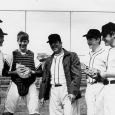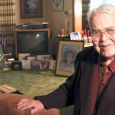The Gift of South Dakota
Subscriptions to South Dakota Magazine make great gifts!
Subscribe today — 1 year (6 issues) is just $29!
Looking Ahead to 2014
Jun 3, 2013
To no one’s surprise, Tim Johnson will retire from the Senate at the end of this term. It is worth saying that Senator Johnson is a fine man. We have every reason to be proud of the way he represented our state in the upper house of Congress. His departure opens up a piece of electoral real estate that might determine who controls the Senate in 2015. A year and a half out, it is a good time to take the measure of both parties.
Governor Mike Rounds is the only announced Republican candidate for that Senate seat. He is unlikely to face serious opposition from within his own party. Rounds’ victory in the 2002 Republican gubernatorial primary was the great surprise of that year. The two leading contenders took each other out in a bitter fight, leaving Rounds with the nomination. He won office with fifty-seven percent of the vote and won again in 2006 with over sixty percent of the vote. With two statewide victories under his belt and his popularity intact, he looks to be a formidable candidate.
Kristi Noem is the only Republican who might offer a serious challenge to Rounds, but it seems very unlikely that she would choose to do so or find support within the party if she did. However, if Rounds had not thrown his hat in the ring, she would have been well placed to compete for the Senate seat. Like Rounds, she has twice won a statewide election. South Dakota Republicans have a strong bench.
The Democrats do not. Stephanie Herseth Sandlin would have been the best candidate to challenge Rounds in the general election. She won statewide four times, including the special election in 2004 that first put her in office. However, she declined to run, as did Senator Johnson’s son, Brendan. The leading contender for the Democratic nomination is Rick Weiland, who enters the contest with the backing of Tom Daschle.
I met Rick Weiland in 1994 when he appeared on a televised panel with his opponent for the House seat, John Thune. Weiland was charming, intelligent and articulate. He won six of our state’s sixty-six counties and thirty-seven percent of the popular vote. In the 2002 Democratic primary for the at large House seat, he lost nearly every county to Stephanie Herseth and carried only thirty-two percent of the Democratic voters.
Rick Weiland and Stephanie Herseth Sandlin represent two sides of the Democratic coin. In 2010 Rick’s brother Kevin considered challenging Herseth Sandlin for the nomination, largely because she voted against ObamaCare. He did not do so, but that was a sign of a division in the party that helped elect Kristi Noem. It is possible that Herseth Sandlin decided not to run in part because she could not count on the enthusiastic support of her own party. If so, that does not bode well for the near term future of that party in the Rushmore State.
Weiland may better represent the core of the Democratic Party, here and nationally. If he is going to be competitive in 2014, he is going to have to win more than six counties.
Editor's Note: Ken Blanchard is our political columnist from the right. For a left-wing perspective on politics, please look for columns by Cory Heidelberger every other Wednesday on this site.
Dr. Ken Blanchard is a professor of Political Science at Northern State University and writes for the Aberdeen American News and the blog South Dakota Politics.










Comments
In that same vein, Ken, purely from an analytical standpoint, six counties might be enough if they turned out to be Lincoln, Pennington, Minnehaha, Davison, Brown and Lawrence?
I think my Round's point is why would anyone in the Republican Party want to run against him. Unless I am missong something I think the Party is thrilled to have him run.
Will it make a difference in DC, probably not. I think DC has been out of control for decades and it has become a way of life for those elected and employed there.
As for Bernie's six counties, if Weiland does win those six... Therein lies the problem.